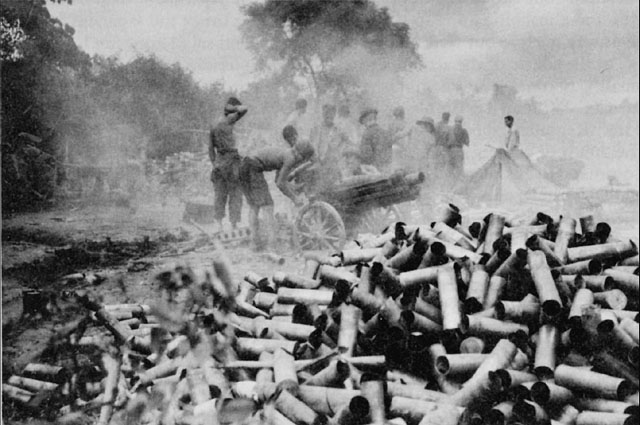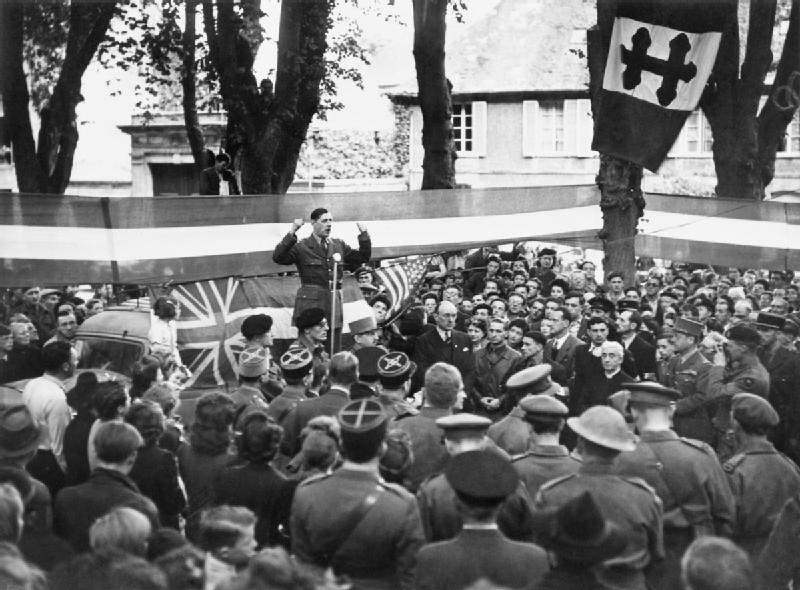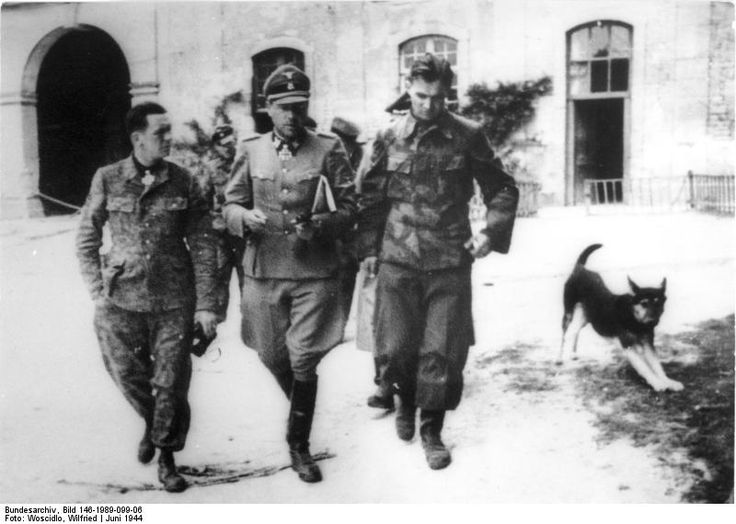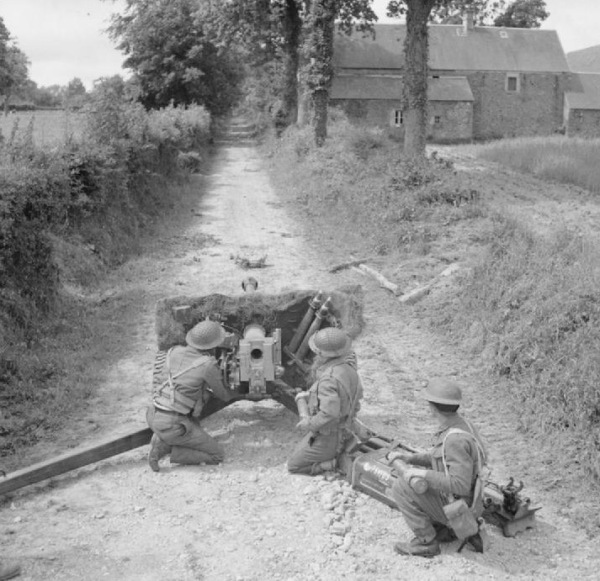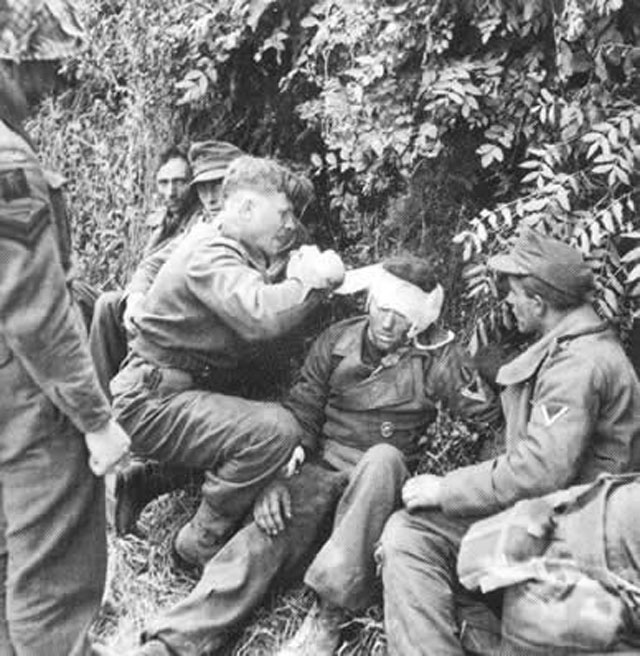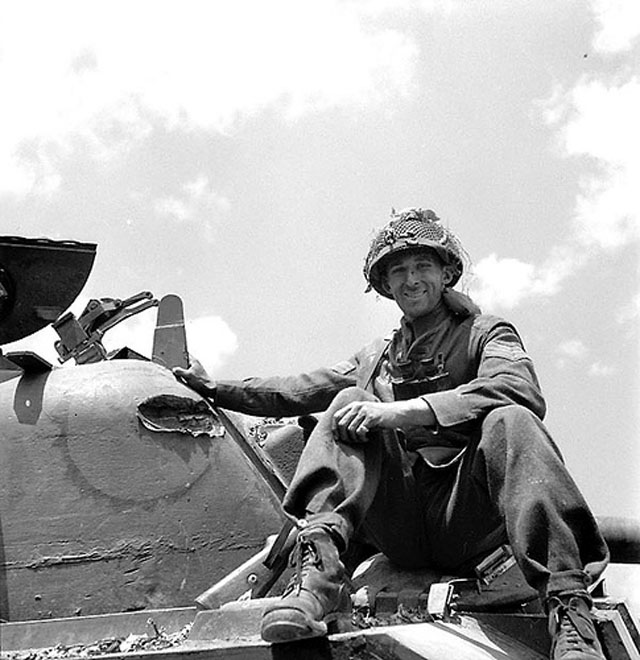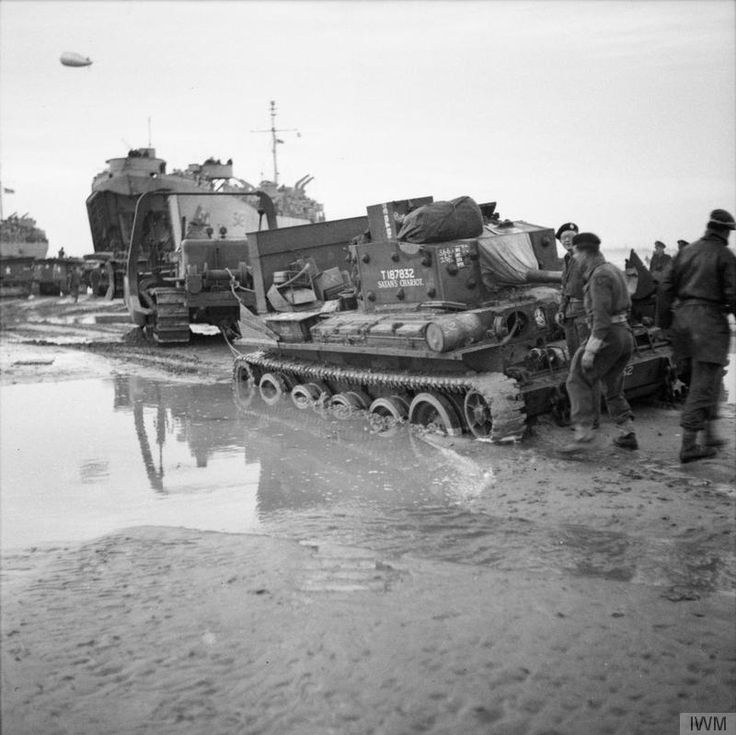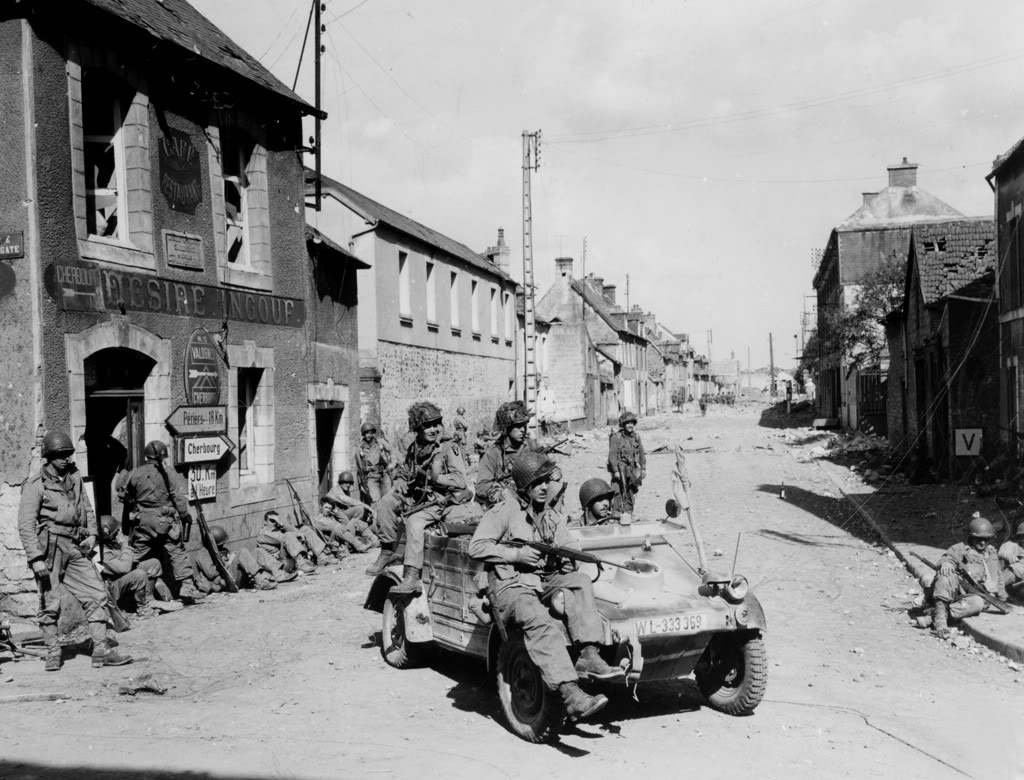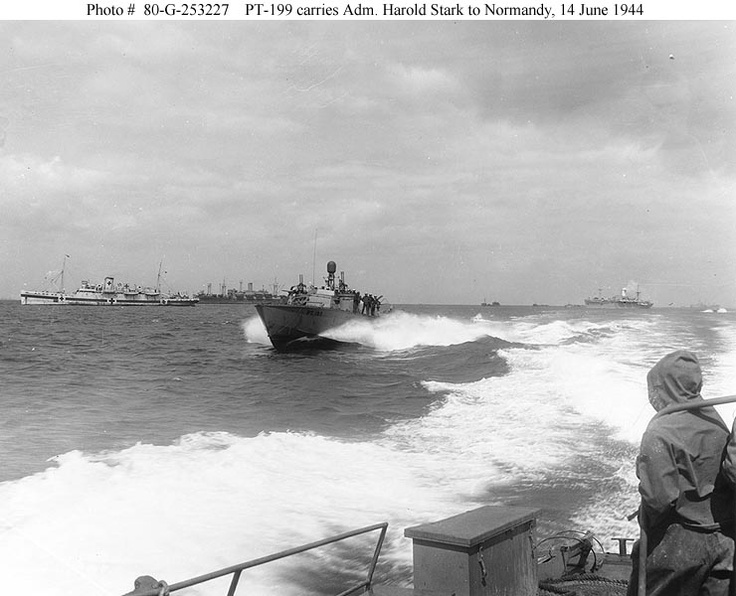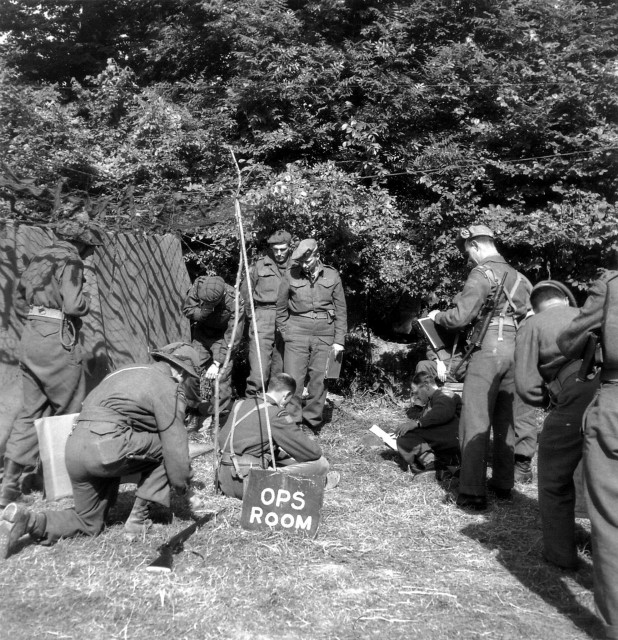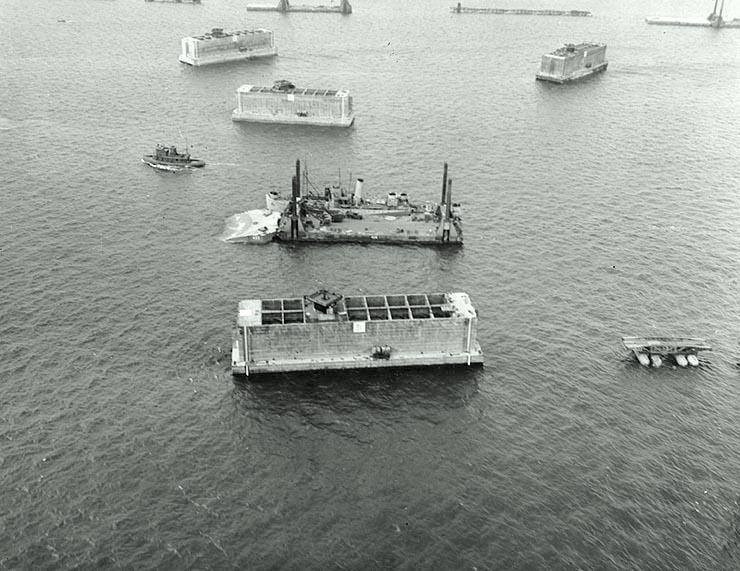Air Operations, Carolines
- 30 XIII Bomber Command B-24s attack the Truk Atoll.
- During the night, VII Bomber Command B-24s attack the Truk Atoll.
Air Operations, CBI
BURMA- Several 10th Air Force P-40s attack targets around Mogaung.
- 43 14th Air Force P-40s attack Japanese Army troops, Yangtze River traffic, and occupied villages in the Tungting Lake region.
- 21 10th Air Force B-25s airlift ammunition to Imphal.
Air Operations, East Indies
380th Heavy Bomb Group B-24s attack the seaplane base at Halong, Celebes.
[Air Operations, Europe
RAF BOMBER COMMMANDDaylight Ops:
- 221 Lancasters and 13 Mosquitos of Nos. 1, 3 and 5 Groups carry out Bomber Command's first daylight raid since May 1943. The targets are the fast German motor-torpedo boats (E-boats) and other light naval forces harbored at Le Havre which are threatening Allied shipping off Normandy only 30 miles away. The raid takes place in 2 waves. Most of the aircraft in the first are from No. 1 Group and the second from No. 3 Group. Pathfinders provide marking for both raids by their usual methods. The naval port is accurately bombed by both waves with 1,230 tons of bombs. Few E-boats escape damage. No. 617 Squadron sends 22 Lancasters, each loaded with a 12,000lb tallboy, and 3 Mosquito marker planes to attack the concrete-covered E-boat pens just before the first wave. Several hits are scored on the pens and 1 bomb penetrates the roof.
- The raid is regarded as an experiment by Sir Arthur Harris, who is still reluctant to risk his squadrons to the dangers of daylight operations, but both waves of the attack are escorted by Spitfires of No. 1 Group.
- Only 1 Lancaster is lost.
- 337 aircraft of Nos. 4, 5 and 8 Groups attack German troop and vehicle positions at Aunay-sur-Odon and Évrecy, near Caen. In this total are 223 Lancasters, 100 Halifaxes and 14 Mosquitos. The raids are prepared and executed in great haste in response to an army report giving the details of the presence of major German units. The weather is clear and both targets are successfully bombed.
- There are no losses.
- 330 aircraft of Nos. 4, 6 and 8 Groups attack railways at Cambrai, Douai and St Pol. All the targets are either partially covered in cloud or affected by haze and the bombing is not completely concentrated or accurate. 3 Halifaxes and 1 Lancaster are lost, the Lancaster being the Master Bomber's aircraft at Douai.
- 35 Mosquitos are sent to hit the Scholven/Buer oil plant. A German report says that 3 bombs fell in the plant area and that 3 civilians outside the factory are killed.
- There are no aircraft losses.
- 12 Stirlings lay mines off French ports, 10 aircraft are on Resistance operations, and there are 19 Serrate and 18 Intruder patrols and 8 RCM sorties.
- There are no losses.
BELGIUM:
- A total of 243 3rd Bomb Division B-17s and 7 2nd Bomb Division B-24s attack three airdromes and several other targets.
- Bad weather over Germany thwarts attacks there, but a total of 983 8th Air Force B-17s and B-24s attack nine Luftwaffe airfields, supply dumps, and several targets of opportunity.
- 12 B-17s and 2 B-24s are lost
- 168 VIII Fighter Command fighter-bombers attack the Luftwaffe headquarters at Chantilly as well as German Army tank columns encountered in the area.
- 583 VIII Fighter Command fighters patrol the beachhead or sweep ahead of the 8th Air Force heavy bombers. USAAF fighter pilots down 15 Luftwaffe fighters over France between 0730 and 2020 hours.
- 7 VIII Fighter Command fighters and their pilots are lost
- 61 2nd Bomb Division B-24s attack an oil refinery at Emmerich.
- 63 2nd Bomb Division B-24s attack the Eindhoven Airdrome.
FRANCE:
- More than 500 IX Bomber Command B-26 and A-20 sorties are mounted against rail lines southwest of Paris and German Army lines of communication south of the beachhead area. Many tactical targets are also attacked.
- 15 9th Air Force fighter-bomber groups escort medium bombers and attack numerous tactical and transportation targets in the beachhead area and across central France.
ITALY:
- 12th Air Force B-25s and B-26s attack viaducts and bridges in north-central Italy and ships in the harbor at Leghorn.
- XII TAC A-20s attack ammo dumps.
- XII TAC fighter-bombers attack bridges and roads immediately to the north of the battle area.
CZECHOSLOVAKIA:
- 15th Air Force B-24s attack oil-industry targets at Pardubice.
- 15th Air Force B-17s attack oil refineries at Budapest and Komarom.
- P-38 pilots of the 14th Fighter Group's 49 Fighter Squadron down 15 Bf-109s over Petfurdo between 1100 and 1125 hours.
- 15th Air Force heavy bombers attack oil refineries at Osijek and Sisak.
- 15th Air Force P-38 dive-bombers attack Kecskemet Airdrome.
Air Operations, Japan
4 28th Composite Bomb Group B-24s are attacked by 20 Japanese fighters while on a photo-reconnaissance mission over the Kurile Islands.
[Air Operations, Marianas
- US warships and carrier aircraft continue to attack pre-invasion targets, especially on Saipan.
- A VF-50 F6F downs a G4M 'Betty' bomber at sea at 0830 hours.
- A VF-16 F6F downs a G4M 'Betty' bomber near Saipan at 1255 hours.
Air Operations, New Guinea
- V Bomber Command B-24s attack the Kamiri airfield on Noemfoor.
- B-25s, A-20s, and V Fighter Command P-39s attack the Wewak area.
- A-20s attack the airfield at Babo, and a bridge, fuel dumps, and other targets along the Orai River.
- 348th Fighter Group P-47 glide bombers destroy several bridges across the Orai River.
Air Operations, Pacific
(15th? or 13th?) The first B-29 Superfortress raid on Japan takes place. 48 planes carry out an ineffective night attack on the Yawata iron and steel works from bases in China. 4 planes are lost.
[Atlantic
The US tank landing ship LST-280 is torpedoed by U-621 off Normandy.
[Britain, Command
The appointment is announced in London of Adm Sir Henry Moore to be Commander of the British Home Fleet.
[CBI
BURMAThe Chinese and American forces continue to attack Myitkyina. The Japanese counterattack, taking advantage of the gaps they have opened between the enemy units to create little pockets, but they do not succeed in wiping these out. Gen Boatner orders Morris Force (Indian 3rd Division TF), on the east bank of the Irrawaddy opposite Myitkyina, to attack at once and is informed by its leader, Brig G. R. Morris, that the Japanese command the routes of approach, the terrain is flooded, and the men are exhausted. In the Mogaung Valley, the Chinese are tightening the ring around Kamaing.
On the Salween front, the Japanese are reinforcing positions within and near Lung-ling and begin vigorous counterattacks. On the 21 battalions of the Chinese XI Group Army in the Lung-ling area, only 9 are participating in the action for the city. The Chinese are forced from Manio Bridge, which the Japanese put into use at once.
CHINAContinuing their offensive in China, the Japanese take Liu-yang, increasing the threat to Changsha.
[Eastern Front
The Russian 23rd and 21st Armies, Leningrad Front, advance into the Karelian Isthmus after breaching the outher defenses of the Mannerheim line. The Russians break through the 'VT Line' at the village of Kuuterselka. The sole Finnish armored division counterattacks during the night and briefly recaptures the heights near the village, but the Russians recapture them the next morning.
FINNISH SECTORThe 23rd and 21st Armies launch a concerted attack upon the second defense line and break through, pushing the Finns back on an 8-mile front.
GERMAN COMMANDThe OKH confirms that it believes the main Russian attack for the coming summer campaign will be made in the Ukraine, probably against the 4th Panzer Army
[Italy
While the German 14th Army under Gen Joachim Lemelsen slowly withdraws, maintaining contact with the enemy with its rearguards, the advance of the American IV Corps in the Tyrrhenian sector of the front continues, north and northeast toward Leghorn and Florence. At the center of the Allied line the South African 6th Arm Div takes Orvieto without opposition. Terni and Todi also fall to units of 8th Army.[ITALY]
[Marianas
As Operation FORAGER, the invasion of the Marianas, begins, preliminary bombardments for the invasion of Saipan and Tinian are made. The 2 bombardment groups are commanded by Adms Walden Ainsworth and Jesse Oldendorf and their squadrons include 7 battleships, 11 cruisers and 26 destroyers. There are 8 escort carriers in support. The battleship California (BB-44) is hit by defensive fire from Japanese coastal batteries causing some damage and a number of casualties. There are also intensive minesweeping operations and clearing of underwater obstacles.
[New Guinea
Fighting continues on Biak. Gen Krueger orders Gen Robert Eichelberger, CG of the US I Corps and of TF RECKLESS, to Biak to replace Gen Fuller as CG TF HURRICANE. The change of command galvanizes the Biak offensive, which has ground to a halt against vicious Japanese resistance in the caves and hills of the island. The 1st Battalions of the 162nd and 186th Regiment circle northward around the 3rd Battalion, of the 162nd Infantry, to positions above a low ridge that is barring forward movement and then to push westward abreast, with the 1st Battalion of the 162nd on the left coming up against the perimeter of the Japanese West Caves strong point. Japanese efforts to oust the 1st Battalions during the night is unsuccessful.
In the Wadke-Sarmi area, the rest of the 6th Division arrives at Toem. The 20th Infantry relieves the 158th Infantry at Tirfoam. The 158th takes up positions on the west bank of Tementoe Creek and sends patrols to the south and east.
[Occupied France
De Gaulle appoints administrators for liberated areas.
[Pacific
- The US submarine Golet (SS-361) is probably sunk by the Japanese guard boat Miya Maru, auxiliary submarine chaser Bunzan Maru and naval aircraft off southern Honshu. She will be listed as overdue, presumed lost, on July 26.
- The US submarine Rasher (SS-269) attacks a Japanese convoy in the Celebes Sea and sinks the army cargo ship Koan Maru (3183t) about 130 miles south of Mindanao.
United States, Planning
SWPA headquarters instructs Lt-Gen Krueger's Alamo Force to prepare plans for the capture of Noemfoor Island. The island has three airfields and controls the approaches to western New Guinea. More importantly, MacArthur is frustrated that his timetable has been upset by the delay in capturing the airfields at Biak. Unsure when those airfields will be available, he orders an attack to capture other airfields.
[Western Front
The divisions of the US VII Corps continue to advance in the north and west of the Cotentin peninsula, the 4th Div proceeding along the east coast of the peninsula, the 82nd Airborne, 9th and 90th west of the Merderet River, in an attempt to cut off Cherbourg. On Utah beach, the 79th Div is landed. The newly formed US XIX Corps enters the line between the V and VII Corps. The XIX Corps is made up of the 29th Div, transferred from the V Corps, and the 30th, which occupies the sector between Carentan and Isigny.[WF]
In the British sector, intervention by the American 1st Div allows the 7th Arm Div, which is being pushed south by the German armor, to disengage from the enemy and seek safety in the area of Parfourn-l'Eclin. The offensive against Caen is held up for a time both east and west of the Orne River.[CAEN]
Gen de Gaulle visits the beachhead and takes measures to prepare for the restoration of French civil government in the captured territory.
[Images from June 14, 1944
|
|
|
|
|
|
|
|
|
|
|
|
